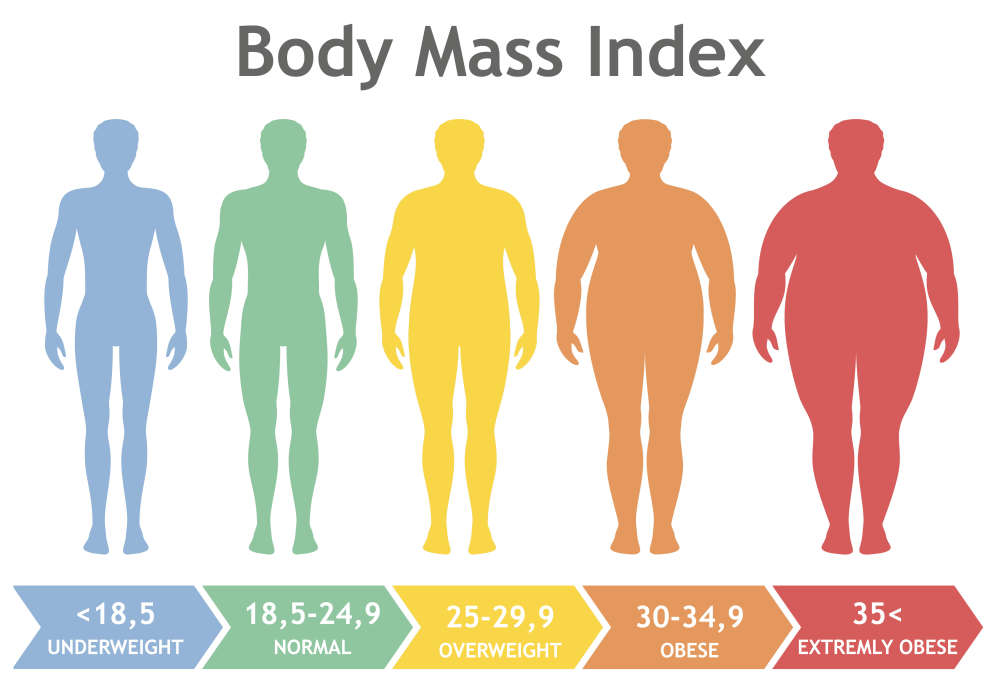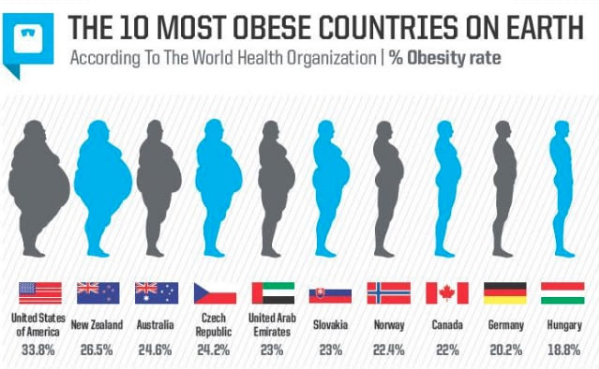Body Mass Index (BMI) and How it Measures the Body Fat
Body Mass Index (BMI) is based on your high and weight about your Height and is applied to most adult men and women aged 20 and over. BMI percentile is the best assessment of body fat for children aged two and above. BMI does not measure body fat directly. However, research indicates that BMI correlates to direct measures of body fat, such as underwater weighing and dual-energy X-ray absorptiometry (DXA), and is considered an inexpensive and easy-to-perform alternative for these.
FACTS ON BMI
Here are some critical points about BMI:
- Body mass index (BMI) is a measure of relative size based on the mass and Height of an individual.
- The Quetelet Index was devised by Adolphe Quetelet, a Belgian mathematician, astronomer, and statistician 1832.
- It was later termed “body mass index” in 1972 by Ancel Keys.
- BMI is a simple, inexpensive, and noninvasive surrogate measure of body fat.
- Factors such as age, sex, ethnicity, and muscle mass do not account in the BMI chart.
For adults over 20 years old and older, BMI can be interpreted using standard or not updated weight status and categories that are the same for all ages and for both women and men. For children, kids, and adolescents between 2-20 years old, BMI interpreted relevant categories to a child’s age and sex. BMI has been reasonable throughout the years as an indicator of body fat categories for adults and children. Because BMI does not measure types of body fat directly, it should not use as a diagnostic tool. BMI should be used only to measure to track weight status in populations and as a screening categories tool to identify potential weight problems in individuals.
Body fat measures, such as skinfold thicknesses, bioelectrical impedance, underwater weighing, and dual-energy X-ray absorption, are more accurate than BMI.
WHAT IS BODY MASS INDEX (BMI)?
BMI use as a screening tool to indicate whether a person is underweight, healthy weight for their Height, overweight or obese. If a person’s BMI is out of the excellent measure by the BMI range, their health risks may increase.
BMI is age-independent, the same for both women and men. But the BMI may not be the same degree of fat in different populations due to a diverse body and other proportions. The health risks associated with high BMI can be confusing; the interpretation of BMI risk may differ for different populations.
There are three ways to check your BMI: Use our BMI calculators First, use the BMI chart; find your Height in the left-hand column. Then, follow it until you see your weight along the top bar. The number in the center box between the two is your BMI.
THE BENEFITS OF MAINTAINING A HEALTHY WEIGHT
- Fewer joint and muscle pains
- The ability to join in more activities and Increased energy
- Improved bodily fluids and blood pressure
- The Reduced burden of the heart and circulatory system
- Improved sleep patterns
Reductions in blood glucose, the risk of developing type 2 diabetes and triglycerides: Excess weight increases how hard the heart has to work to pump blood; it also gives high blood pressure, blood cholesterol, and triglyceride levels and lowers HDL (good) cholesterol levels.
- Excess weight can make help likely to develop diabetes.
- Lifestyle changes that help maintain a 3-5% weight loss and likely to result in clinically meaningful improvements in blood glucose, triglycerides, and risk of developing type 2 diabetes.
- More significant weight loss can help reduce blood pressure and improve blood cholesterol.
THE BODY MASS INDEX MEASUREMENTS?
Researchers point out that the (BMI), based on Height and weight, is not an accurate measure of body fat because it does not account for critical factors that contribute to health or mortality, such as fat distribution, the proportion of muscle to fat, and the sex and racial differences in the body. However, it is a screening tool to identify potential weight problems in adults.
If a person has a high BMI, But is yet to determine if this excess weight is a health risk, call your doctor, or a healthcare provider would need to complete further assessments such as:
- Skinfold thickness measurements
- Evaluations of diet
- Physical activity
- Family history
- Other appropriate health screenings
HOW TO CALCULATE BMI FOR ADULTS
- Belgium Statistician Adolphe Quetelet developed the BMI formula approximately 150 years ago.
THE CALCULATION OF BMI
BMI is based on the following formulas:
- Metric BMI Formula. Weight (kg) / Height (m)2
With the metric system, the formula for BMI is weight in kilograms divided by Height in meters squared (kg/m2). Since Height is commonly measured in centimeters, divide Height in centimeters by 100 to obtain the measurement in meters.
- Imperial BMI Formula. (Weight (lbs.) * 703) / Height (inches)2
**NOTE** The content in this blog is subject to interpretation and is the opinion of the content writer. We do not claim it to be fact. We encourage you to consult a medical doctor before taking any prescribed medications or supplements.
Conclusion
Supporting Hormones health is essential for overall well-being and vitality. By incorporating regular exercise, proper nutrition, adequate sleep, stress management techniques, and IV therapy, you can help maintain optimal testosterone levels and lead a healthy, balanced life. Always consult a healthcare professional before making significant changes to your lifestyle or starting any new treatments to ensure they suit your needs.
At AAI Rejuvenation Clinic, we advise anyone to think seriously about beginning Hormone treatment if there is no medical need for it. However, we will take every precaution to ensure that you read your program’s positive benefits by providing the latest at-home hormonal mouth-swab testing to ensure we are continually monitoring your progress and aware of any adverse side effects. Fill out the Medical History Form, or if you need more information, call us at (866) 224-5698 or (866) AAI-Low-T.
Low Hormone Symptoms
- Motivation
- Sex Drive and Desire
- Depression
- Fatigue
- Erectile Dysfunction
- Cholesterol
- Low Energy
- Memory Loss
- Osteoporosis
- Wounds & Illness
- Muscle Mass
- Sleep Disturbances
- Thyroid Dysfunction
- Weight Gain
]]>




